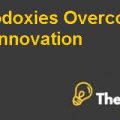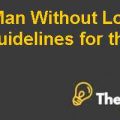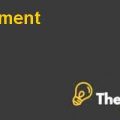
Economics Final Case Solution
Problem 1
The payoff of the child is U(Ic+B), whereas the payoff of the parent is V(Ip-B)+kU(Ic+B). Using the backwards-inductions and the first order conditions, the parent is going to choose B to maximize his payoff.
dV (IP − B) dB + dkU (IC + B) dB = −V 0 + kU0 = 0--------------------------------------------------1
Therefore,for each of the pairs of Ip and Ic, there will always be a B which would be maximizing the payoff of the parents utility. The child can then also determine A, which is the best action.
dU(IC + B) dA = U 0 • dIC dA + dB dA= 0--------------------------------------------------------2
The equation in 1 when is formed into a differential equation with respect to A then by rearranging some parts we get,
dB dA = V 00 • dIP dA − kU00 • dIC dA kU00 + V 00………………………………………..3
Next, we substitute the above equation in eq 2,
V 00 • dIC dA + dIP dA = 0………………………………………………………………..4
Over here we can see that the variable strictly concave is V while V’’ is strictly positive. This means that ultimately the child is going to choose that action which would maximize the payoff of the entire family which is shown below:
dIC dA + dIP dA = 0
Problem 2
a).
Some of the conditions would be as follows. In order to be a pooling equilibrium in which the firm hires the uneducated workers and both of the workers do not obtain education, we need Pr(H)<=W/Pie<=Pr(H/Ne). The firm will have to be pessimistic about the proportion of the skilled workers and it will also have to be optimistic about the proportion of the unskilled workers. Pr(H/Ne) must be sufficiently high and the Pr (H) must be sufficiently low. In such equilibriums, type L pools with type H and prevents the player 2 from learning anything regarding the skills of the workers from the signal of the education.
b).
Under this the possibility of the pooling equilibrium is for both of the types of the player 1 to choose NE. The player 2’s posterior beliefs out of equilibria is something on which the number of such equilibria would depend which is basically the beliefs of player 2 after the player 1 has chosen E. There are no restrictions, which are placed on these posterior beliefs by the Perfect Bayesian Equilibrium.
c).
If cH < w < cL then the equilibrium in the above part would not make sense because for player 1 of type L to play a mixed strategy, he or she also needs to get the same expected payoff by playing E which is equal to Jw-CL given the strategy of player 2 thatis also a mixed strategy, which is 0 by playing NE provided that no job is offered by player 2 to the applicants.
Problem 3
a)
The maximization problem for the student would be set up as follows:
R = Da (1+r)
Subject to constraints,
I <= Da
Da >= 0
i>= 0
b).
Under perfect information, I would be the rate of interest on the student loan.
c).
The implicit function for the optimal level of efforts would be:
A= Pie(a)*(-R+D(a))
This optimal level of a would change with respect to r in an inverse proportion which means that if the optimal level of effort is increased then R would be decreased.
d).
If interest rate is not a direct function of the effort of the student then,
A= Pie(a)*(-R+D(a))+1/i
Using the first order conditions,
Dt/da = a * -i^1/2+0
The implicit function which determines the optimal effort would be:
A = -ai^1/2
e).
This shows more effort as compared to the first best.
f).
The interest rate as compared to the first best is lower provided e.......................
This is just a sample partial case solution. Please place the order on the website to order your own originally done case solution.












